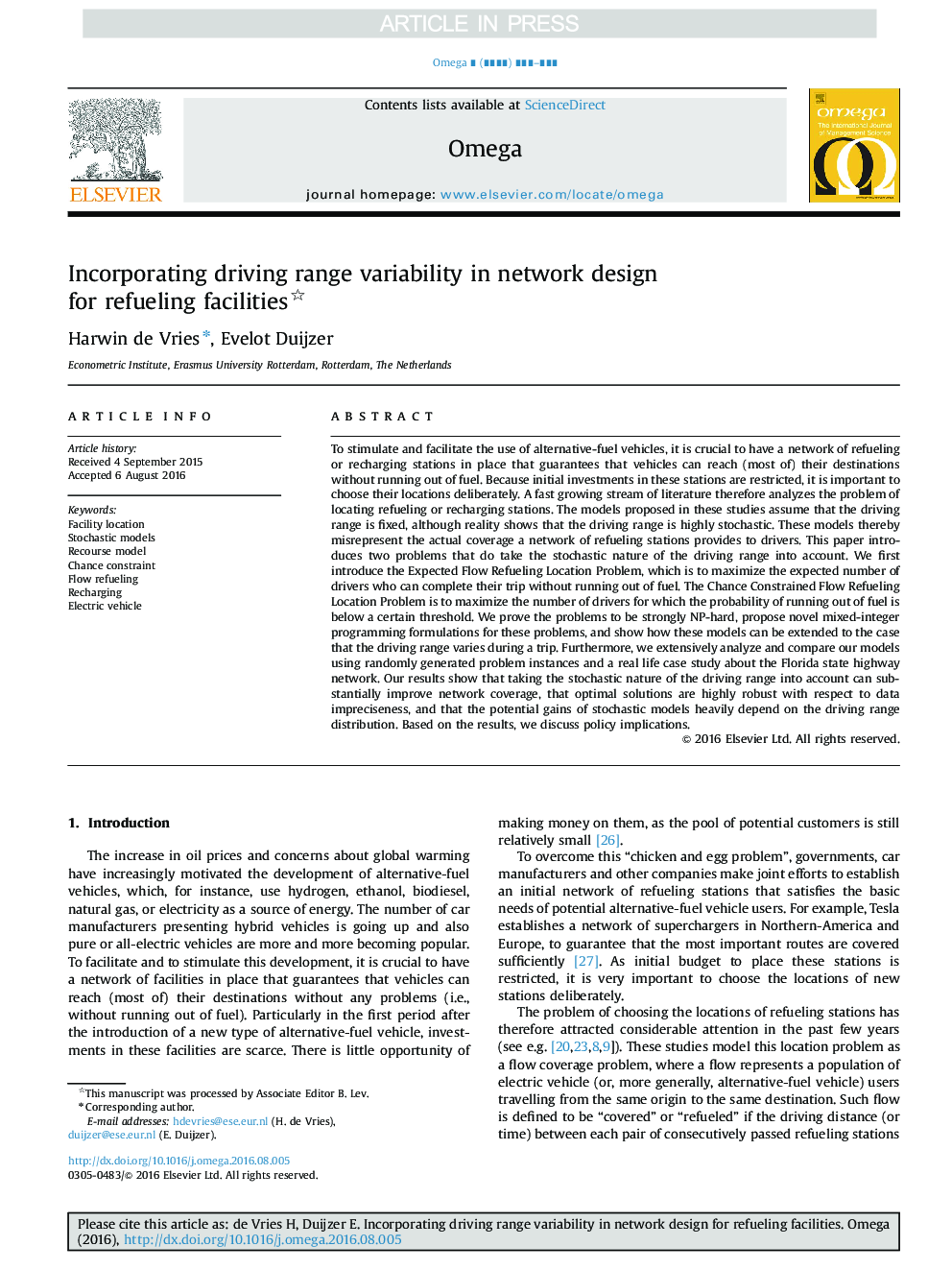| کد مقاله | کد نشریه | سال انتشار | مقاله انگلیسی | نسخه تمام متن |
|---|---|---|---|---|
| 5111740 | 1483660 | 2017 | 13 صفحه PDF | دانلود رایگان |
عنوان انگلیسی مقاله ISI
Incorporating driving range variability in network design for refueling facilities
ترجمه فارسی عنوان
شامل تغییر در محدوده رانندگی در طراحی شبکه برای سوخت گیری امکانات
دانلود مقاله + سفارش ترجمه
دانلود مقاله ISI انگلیسی
رایگان برای ایرانیان
کلمات کلیدی
سلام، مدل های تصادفی، مدل تجدید نظر، محدودیت شانس، سوخت گیری مجدد شارژ، خودرو الکتریکی،
موضوعات مرتبط
علوم انسانی و اجتماعی
مدیریت، کسب و کار و حسابداری
استراتژی و مدیریت استراتژیک
چکیده انگلیسی
To stimulate and facilitate the use of alternative-fuel vehicles, it is crucial to have a network of refueling or recharging stations in place that guarantees that vehicles can reach (most of) their destinations without running out of fuel. Because initial investments in these stations are restricted, it is important to choose their locations deliberately. A fast growing stream of literature therefore analyzes the problem of locating refueling or recharging stations. The models proposed in these studies assume that the driving range is fixed, although reality shows that the driving range is highly stochastic. These models thereby misrepresent the actual coverage a network of refueling stations provides to drivers. This paper introduces two problems that do take the stochastic nature of the driving range into account. We first introduce the Expected Flow Refueling Location Problem, which is to maximize the expected number of drivers who can complete their trip without running out of fuel. The Chance Constrained Flow Refueling Location Problem is to maximize the number of drivers for which the probability of running out of fuel is below a certain threshold. We prove the problems to be strongly NP-hard, propose novel mixed-integer programming formulations for these problems, and show how these models can be extended to the case that the driving range varies during a trip. Furthermore, we extensively analyze and compare our models using randomly generated problem instances and a real life case study about the Florida state highway network. Our results show that taking the stochastic nature of the driving range into account can substantially improve network coverage, that optimal solutions are highly robust with respect to data impreciseness, and that the potential gains of stochastic models heavily depend on the driving range distribution. Based on the results, we discuss policy implications.
ناشر
Database: Elsevier - ScienceDirect (ساینس دایرکت)
Journal: Omega - Volume 69, June 2017, Pages 102-114
Journal: Omega - Volume 69, June 2017, Pages 102-114
نویسندگان
Harwin de Vries, Evelot Duijzer,
